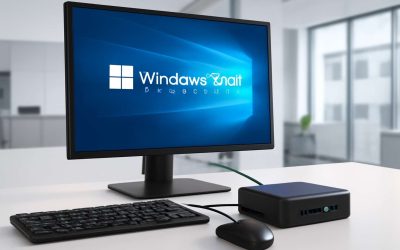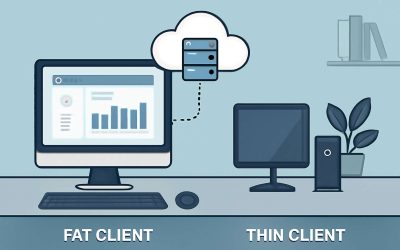
A thin client computer is a computer that runs software and services from a server rather than locally. Typically, it has a monitor, keyboard and mouse, but no hard disk or other storage. It has limited computing power and uses low-power processors, memory, and fans to communicate with the centralized server.
Thin clients have many advantages over traditional PCs, which require a large amount of space and can suffer from poor performance in challenging environments. They are also easy to maintain, and can be cooled using a passively cooled solution that requires no moving parts.
These devices can help companies save money and cut down on maintenance costs. They use less energy and have a longer lifespan than standard computers, since they’re not as susceptible to physical damage.
Unlike desktop computers, which are based on local hardware, thin clients connect to a centralized server via a network connection. This means that updates, security patches, and other software are deployed to each device before they’re installed across the entire system. This makes it much easier for IT administrators to manage and protect all of the systems in a company without needing to manually install these programs onto every device.
It’s a great solution for companies that have to roll out new desktops frequently, as it is faster and cheaper than the alternative of deploying several conventional PCs at each location. For example, a financial institution that needs to provide desktops to a hundred users can do so with minimal configuration by using thin clients.
The main advantage of thin clients is that they can be easily managed from a central location. This makes it easy to apply security patches, update software, and perform other tasks remotely.
They can be used in a variety of settings, including call centers, nursing stations, trading floors and POS displays. They are especially beneficial for business environments that don’t have a lot of room for a standard PC, like libraries and Internet cafes.
In addition, they can be a good fit for public locations like hospitals and airlines where it’s important to limit the risk of data loss. If a user leaves the terminal and connects to the same network, they won’t have access to data from previous sessions.
Another benefit is that thin clients are more secure and can reduce the number of viruses and malware in the environment. Unlike other types of devices, thin clients run a full version of the operating system from a centralized server, so any malware they might be infected with can’t be downloaded onto the device itself.
A thin client computer can be used as a standalone device or can be attached to other devices to create a virtual workstation. They can be configured with applications such as Microsoft Windows, Linux, and other operating systems.
They can be controlled by a central server, so that IT can restrict which types of applications users can use. They can also be protected from viruses and other threats by limiting the amount of data stored on the client itself. This is a major benefit of thin clients, and it’s a reason why some companies prefer them over their thicker counterparts.



0 Comments